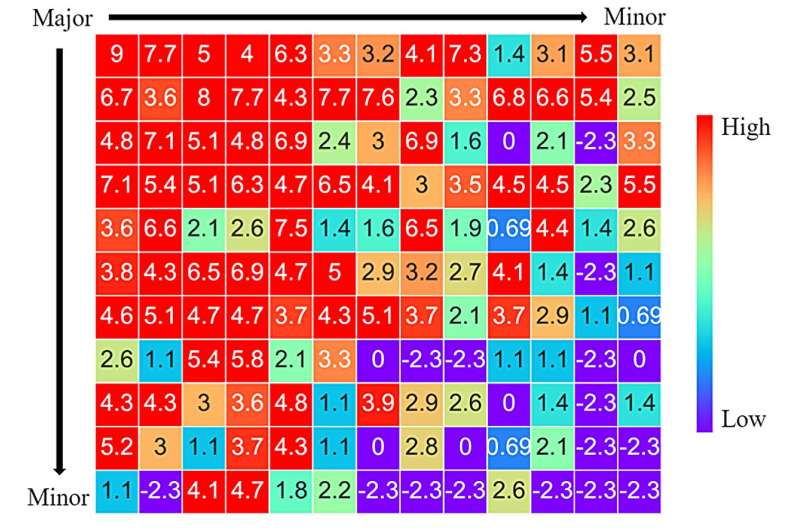This article has been reviewed according to Science X's editorial process and policies. Editors have highlighted the following attributes while ensuring the content's credibility:
fact-checked
proofread
Scientists revisit multi-dimensional classification from a dimension-wise perspective

While the class imbalance issue has been extensively investigated within the multi-class paradigm, its study in the multi-dimensional classification (MDC) context has been limited due to the imbalance shift phenomenon. A sample's classification as a minor or major class instance becomes ambiguous when it belongs to a minor class in one labeling dimension (LD) and a major class in another.
Previous MDC methodologies predominantly emphasized instance-wise criteria, neglecting prediction capabilities from a dimension aspect, i.e., the average classification performance across LDs.
Addressing these problems, a research team led by De-Chuan Zhan from LAMDA, Nanjing University has published their new study, titled "Revisiting Multidimensional Classification from a Dimension-wise Perspective," in Frontiers of Computer Science.
The team asserts the significance of dimension-wise metrics in real-world MDC applications and introduce two such metrics. Furthermore, the team observes imbalanced class distributions within each LD and propose a novel Imbalance-Aware fusion Model (IMAM) for addressing the MDC problem.

In the research, IMAM first decomposes the task into multiple multi-class classification problems, creating imbalance-aware deep models for each LD separately. This straightforward method performs well across LDs without sacrificing performance in instance-wise criteria. Subsequently, IMAM employs LD-wise models as multiple teachers and transfer their knowledge across all LDs to a unified student model.
Extensive experiments are conducted on various MDC datasets. The results indicate that the proposed IMAM is superior to others in a big gap.
More information: Yi Shi et al, Revisiting Multidimensional Classification from a Dimension-wise Perspective, Frontiers of Computer Science (2024). DOI: 10.1007/s11704-023-3272-9. journal.hep.com.cn/fcs/EN/10.1 … 07/s11704-023-3272-9





















